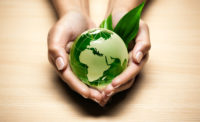Dow Benelux Outlines Roadmap to Support Dutch Climate Agreement
The roadmap makes Terneuzen a flagship site and role model for the company’s global transition to meet its goal of achieving carbon neutrality by 2050.

Dow Benelux recently detailed a roadmap to reduce current CO2 emissions from its operations in Terneuzen, the Netherlands, by more than 40% by 2030. According to Dow, the roadmap makes Terneuzen a flagship site and role model for the company’s global transition to meet its goal of achieving carbon neutrality by 2050. The roadmap to CO2 neutrality is designed in three phases.
In the first phase, the plan foresees the construction of a clean hydrogen plant where byproducts from core production processes would be converted into hydrogen and CO2. The hydrogen would be used as a clean fuel in the production process, while the CO2 would be captured and stored until alternative technologies develop. Dow will also look for ways to enable usage of the CO2 in its processes rather than storing it.
Plant startup is expected in 2026 and would allow Dow in Terneuzen to reduce CO2 emissions by approximately 1.4 million tons per year. This is equivalent to the annual emissions of more than 300,000 cars. The first phase would also include additional investments in site infrastructure for CO2 liquefaction, air separation, hydrogen distribution, and CO2 transport.
Building the new hydrogen plant and the associated infrastructure is expected to create 3,500-4,000 engineering and construction jobs over a period of three years, as well as 400-500 permanent jobs in the region and across associated service providers.
In the second phase, by 2030, Dow will capture CO2 from its ethylene oxide plant and replace some gas turbines with electrical motor drives. This will avoid a further 300,000 tons of CO2 emissions per year.
The third and final phase of the plan will develop and implement additional breakthrough technologies to replace fuel usage in the production processes. An example is Dow’s previously announced collaboration with Shell to electrify ethylene steam cracking furnaces. These furnaces currently rely on fuel combustion, which makes them CO2-emission intensive when not fired on clean hydrogen. Switching to electrical cracking with clean electricity will reduce the CO2 footprint of the production process to near zero emissions.
“We are part of a vital and critical industry—we supply building blocks for thousands of consumer goods, many of which provide CO2 reducing benefits to our customers and the value chain,” said Anton van Beek, president of Dow Benelux. “We want to continue to supply those products while enhancing our long-standing commitment to sustainability, so we need and want to adapt how we manufacture those products to help address climate change. With this roadmap we aim to enable low-CO2 products to be made in the Netherlands.”
A preliminary investment decision on the implementation of Dow’s Terneuzen roadmap is expected in 2022. “To reach a positive decision, we are completing feasibility studies and continue to perfect new technologies,” van Beek said. “In addition, public-private collaboration will be of utmost importance. The scale and complexity of the challenge is such that only through the collaboration of industry, academia, government and others, can we turn the tide on climate change. We encourage the Dutch government to continue to partner with industry and incentivize investment in clean energy and related technologies to support the long-term competitiveness of Dutch industry while reducing carbon emissions and achieving net carbon neutrality.”
Learn more about Dow at www.dow.com.
Looking for a reprint of this article?
From high-res PDFs to custom plaques, order your copy today!





